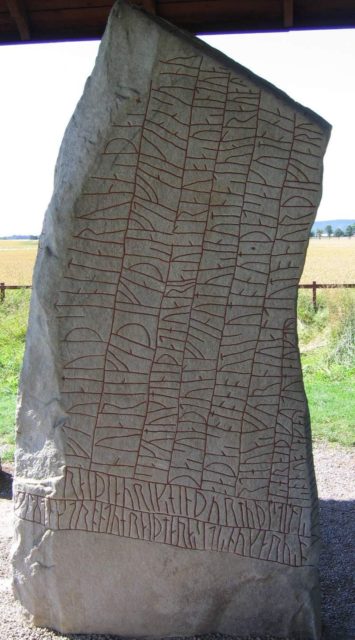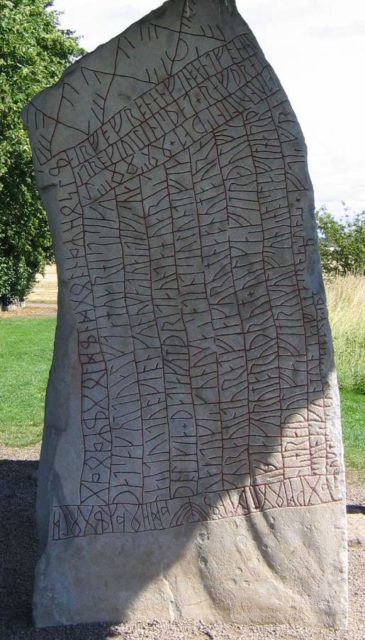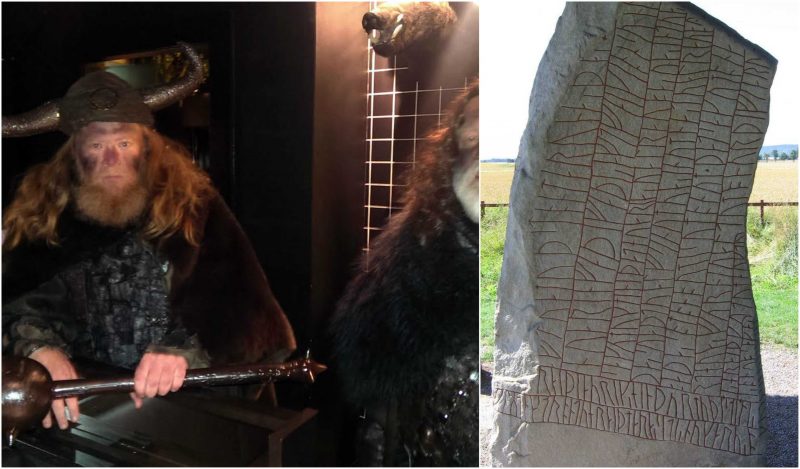Due to its mysterious meanings and varying interpretation by the experts and local legends, the Rok Runestone has been baffling the curious minds since it was first erected in late 800’s. People believed the inscriptions on the Runestone to be the heroic tales of gallant Viking kings and battles they fought. However, an ambitious expert has come up with the ground-breaking revelation suggesting that inscriptions in question are rather of a humble nature, describing the stone itself and not the Kings.

Regarded as the first piece of written Swedish literature, the mysterious monument erected in the Swedish province of Ostergotland contains the longest runic inscription on a stone and has more content to reveal as well. Previously it was thought that a Viking Lord named Varin carved the letters onto these stones, glorifying his son’s bravery who died while fighting, a long list of his warrior ancestors are also mentioned in the writing.

Before Latin was adopted in the Scandinavian regions, the most common language was written in alphabets called Runes, with another variant used in the region known as futhark. The stone was first discovered in the early 19th century, as part of a church built sometime in 12th century. The stone itself is believed to have been carved much earlier in the 9th century, due to its ancient runic alphabets. Since it was first discovered, the Runestone has been the centre of many translation attempts, however, experts developed a consensus over the Rok Runestone suggesting that it is next to impossible to fully translate let alone complete comprehend the text. Although this notion gave the stone a much higher place amongst other such stone carvings, however, a new approach to interpreting the text was needed, and it finally came from.

The most popular theory about the stone came from Alias Wessen, who even named the inscriber of the alphabets as the Viking King Varin, who carved the stone as a tribute to his son, and also to God Thor. According to Wessen, the reason Varin took the effort to carve the alphabets was to motivate his tribes to avenge the death of his young son. By mentioning the Gods and a long line of brave ancestor Varin wanted to prove his high position among the prestigious ranks of tribes, and strengthening his position as a strong leader, despite the loss of his only son.
Professor Per Holmberg of the University of Gothenburg has come forward with a controversial understanding on the Rok Runestone. Being the associate professor of Scandinavian languages, Professor Holmberg holds all the required credentials to formulate a concrete theory on the matter. According to Holmberg, there has been a persistent misrepresentation of the Runes in question, simply due to lack of understanding. The elaborate metaphoric quality of the Rok Runestone left it o
pen for all kinds of interpretations, so people gave it the most obvious explanation; the tales of ancient kings’ galore and bravery. The linguist and expert of Scandinavian writings, Professor Holmberg suggested that the deviation from the actual meaning of the writings started when a number of translation errors got mixed up by nationalistic wishful thinking of some Scandinavian experts. Mr. Holmberg has based his findings on a popular linguistic theory known as social semiotics, which suggests that every culture and civilization is prone to the variants of interpretation of any text written in their language. He added that a more critical and unbiased approach was required to interpret the Rok Runestone in order to detach the facts from the fiction, and Holmberg believes his research does exactly that.
